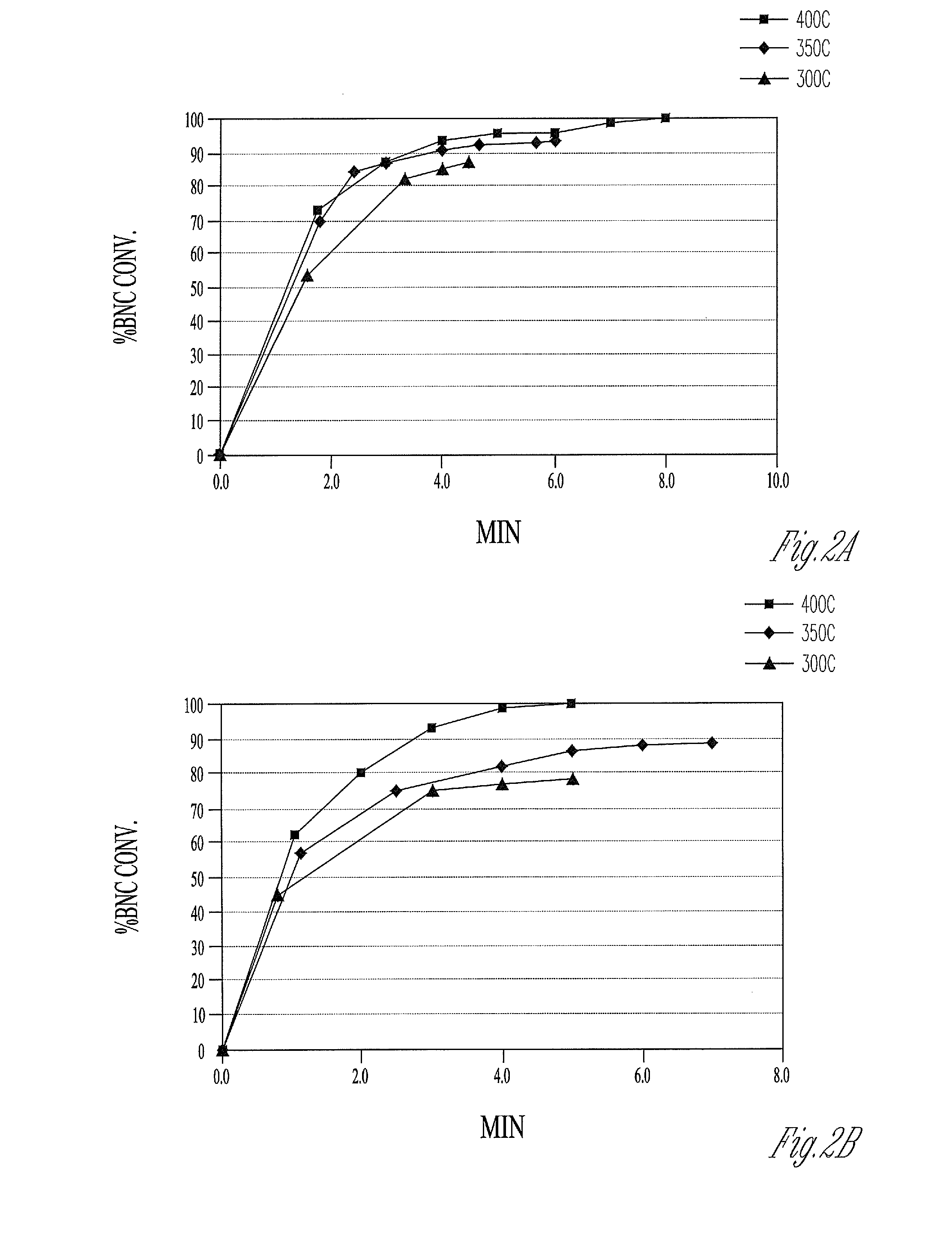Calcination and reduction process including a fluidizing bed reactor
a fluidizing bed reactor and calcium reduction technology, applied in the direction of organic compounds/hydrides/coordination complex catalysts, physical/chemical process catalysts, organic chemistry, etc., can solve the problems of agglomeration or formation of clumps, difficult to handle, and not optimally complex with phosphorus-containing ligands
- Summary
- Abstract
- Description
- Claims
- Application Information
AI Technical Summary
Benefits of technology
Problems solved by technology
Method used
Image
Examples
examples
[0081]In the following examples a bidentate phosphite ligand, Ligand A, is used in assays to evaluate ligand complex formation by various nickel preparations.
[0082]Ligand A can be prepared by any suitable synthetic means known in the art. For example, 3,3′-diisopropyl-5,5′,6,6′-tetramethyl-2,2′-biphenol is prepared by a procedure disclosed in U.S. Published Patent Application No. 2003 / 0100802 in which 4-methylthymol can undergo oxidative coupling to the substituted biphenol in the presence of a copper chlorohydroxide-TMEDA complex (TMEDA is N,N,N′,N′-tetramethylethylenediamine) and air. The phosphorochloridite of 2,4-xylenol, [(CH3)2C6H3O]2PCl, can be prepared by a procedure disclosed in U.S. Published Patent Application No. 2004 / 0106815. The procedure provides a selective formation of phosphorochloridite from anhydrous triethylamine and 2,4-xylenol, which are added separately and concurrently in a controlled manner to PCl3 dissolved in an appropriate solvent under temperature-contr...
examples 1 to 4
[0105]In a series of experiments BNC is reduced directly in hydrogen flowing at 0.5 liters / min at temperatures between 200° C. and 500° C. The reduction process at 200° C. is conducted for 6 hours. At all other temperatures, a reduction time of 2 hours is used. The activities of the nickel metal samples are as follows:
Example1234Temperature (° C.)200300400500Activity5.16.44.32.5
[0106]The results indicate a maximum activity is obtained for the direct reduction of BNC at 300° C.
examples 5 to 8
[0107]In a series of experiments, BNC is first calcined in air using a muffle furnace at temperatures between 200° C. and 500° C. The calcination at 200° C. is carried out for a period of 18 hours. At all other temperatures, calcinations are conducted for 1 hour. The sample calcined at 200° C. contains some unreacted BNC, whereas the BNC calcined at the higher temperatures contains no residual BNC. The nickel oxide formed during calcination is subsequently reduced in hydrogen flowing at 0.5 liters / min at the same temperature as is used for calcination (e.g. BNC calcined at 300° C. is reduced at 300° C.). At 200° C. the reduction step is conducted for 6 hours. A reduction time of 2 hours is used at all the other temperatures. The activities of the nickel metal samples are as follows:
Example5678Temperature (° C.)200300400500Activity8.28.35.41.7
[0108]These activities suggest that the reactivity of the nickel metal toward formation of the soluble nickel complex declines as temperatures ...
PUM
| Property | Measurement | Unit |
|---|---|---|
| temperature | aaaaa | aaaaa |
| time | aaaaa | aaaaa |
| temperature | aaaaa | aaaaa |
Abstract
Description
Claims
Application Information
 Login to View More
Login to View More - R&D
- Intellectual Property
- Life Sciences
- Materials
- Tech Scout
- Unparalleled Data Quality
- Higher Quality Content
- 60% Fewer Hallucinations
Browse by: Latest US Patents, China's latest patents, Technical Efficacy Thesaurus, Application Domain, Technology Topic, Popular Technical Reports.
© 2025 PatSnap. All rights reserved.Legal|Privacy policy|Modern Slavery Act Transparency Statement|Sitemap|About US| Contact US: help@patsnap.com



